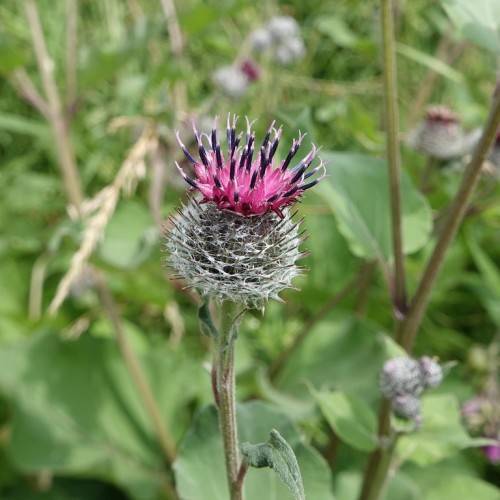
Woolly Burdock
Arctium tomentosum
Watering:
Frequent
Hardiness Zone:
Flowers:
Flowers
Sun:
full sun,part shade
Fruits:
Fruits Ready In Summer
Leaf:
Yes
Growth Rate:
Low
Drought Tolerant:
Yes
Salt Tolerant:
Yes
Care Level:
Medium
watering
Polar daisies prefer moist but well-drained soil, and must be watered regularly during the growing season. They need 1 to 1 1/2 inches of water per week throughout the spring and summer. If you live in an area with hot, dry summers, you may need to water more frequently. In the fall, cut back on watering gradually to prevent the leaves from wilting, but do not let the soil dry out completely. During winter months, little to no additional water should be necessary. Always use a watering can with a fine shower head or the equivalent to get an even spread and to avoid washing away soil.
sunlight
The Polar Daisy species requires some direct sunlight in order to flower but should be provided with bright, filtered light during warmer months. During the summer months, the plant should be situated in an area that receives several hours of direct sunlight each day. In the winter months, the plant should receive only 4 to 6 hours of sunlight a day, with indirect sunlight or artificial lighting making up the difference. With the right balance of sun exposure, Polar Daisy should thrive and flower throughout the year.
pruning
Polar Daisy (Arctanthemum arcticum subsp. polare) requires light pruning to maintain its bushiness. Prune back each stem just after flowers have finished blooming in early summer. Cut back the stem to a few inches above the topmost pair of leaves and remove any dead or dying material. Regular pruning will help keep this perennial neat and bushy and it will also encourage further blooming.
